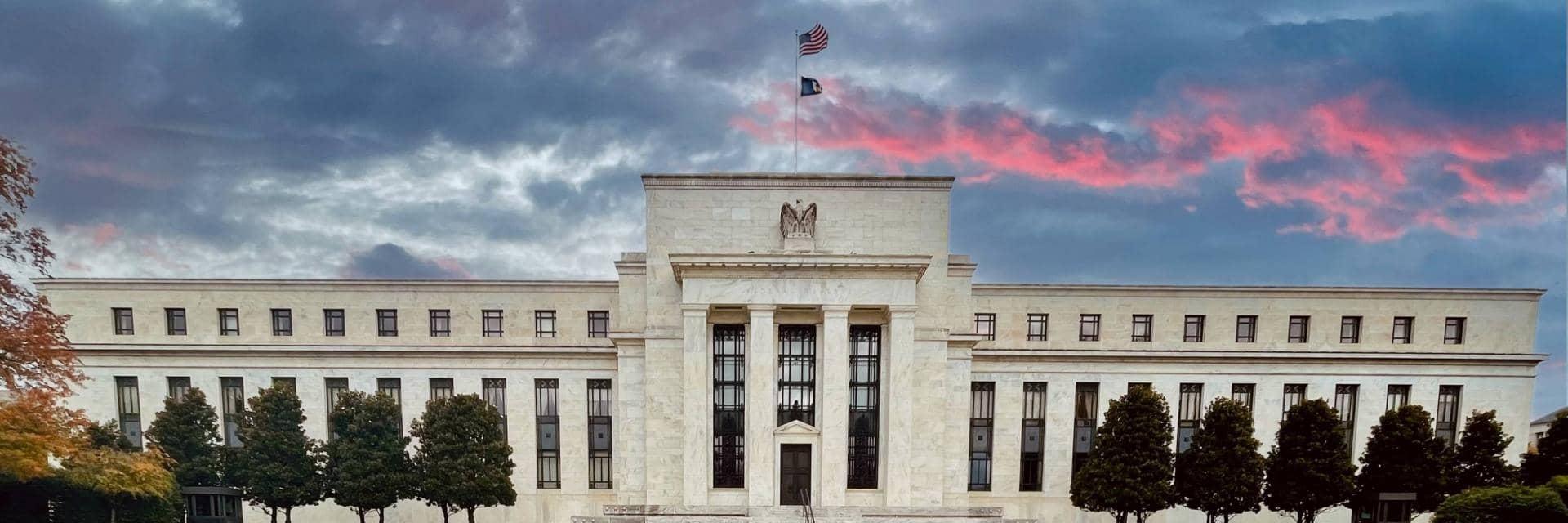
The Fed opts for another hike
16 December 2022
Please note: The article does not constitute advice or any form of investment recommendation.
The US Federal Reserve (Fed) has ended its year of aggressive rate hiking – by raising rates yet again.
And while it wasn’t at quite the scale of the previous four straight 0.75% hikes, the latest 0.50% move nonetheless suggests there will be more interest rate rises to come in 2023, while inflation remains elevated.
The latest increase – the seventh by the Fed this year – brings the US benchmark interest rate to a range of 4.25%-4.5%, its highest rate in 15 years.
However, reaction from stock markets was fairly benign, with traders having all-but-priced-in the latest Fed move, although equity markets did dip in the immediate aftermath – but this wasn’t enough to reverse a relatively good run for US equities since October.
Clawing its way back?
Policymakers, economies, and investors have all had a bruising 12 months.
Wrongfooted by the turmoil in the global economy, central banks scrambled to catch up as inflation soared and became entrenched. It forced the Fed – the world’s most influential central bank - to raise interest rates at a pace unseen in decades. And along with the occasionally cloudy statements made by Fed chair Jerome Powell this year, it leaves 2022 consigned to the history books for many of the wrong reasons.
America’s economic engine is also unlikely to fire up to pre-pandemic levels any time soon, even if the US narrowly avoids recession in 2023. As he conceded on the day, Powell can’t be sure on how soft a landing is possible for the US economy. “No-one knows with any certainty where the economy will be a year or more from now,” he said. “I also don’t think anyone knows whether we’re going to have a recession or not. And if we do, whether it’s going to be a deep one or not ... it’s not knowable.”
Fed keeps talking tough
This new reality of higher-for-longer rates is something investors need to stay live to. The Fed chair also announced on Wednesday that the central bank won’t be changing its 2% inflation goal, meaning more monetary tightening is likely to come before the central bank can achieve this 2% target.
“I would say it’s our judgment today that we’re not in a sufficiently restrictive policy stance yet, which is why we say that we would expect that ongoing hikes will be appropriate,” reflected Powell1.
Cautious optimism
While the final chapter of 2022 is lacking seasonal festive cheer, there’s no reason for long-term investors to despair.
With the Fed easing the pace of its interest rate rises going into 2023, there are finally signs that US has peaked. A similar pattern is also emerging in other key economies, with the Bank of England immediately following the Fed’s lead with its own slower pace hike of 0.50%.
Related articles
This communication is general in nature and provided for information/educational purposes only. It does not take into account any specific investment objectives, the financial situation or particular needs of any particular person. It not intended for distribution, publication, or use in any jurisdiction where such distribution, publication, or use would be unlawful, nor is it aimed at any person or entity to whom it would be unlawful for them to access.
This communication has been prepared by Barclays Private Bank (Barclays) and references to Barclays includes any entity within the Barclays group of companies.
The communication is:
- not research nor a product of the Barclays Research department. Any views expressed in these materials may differ from those of the Barclays Research department. All opinions and estimates are given as of the date of the materials and are subject to change. Barclays is not obliged to inform recipients of these materials of any change to such opinions or estimates;
- not an offer, an invitation or a recommendation to enter into any product or service and do not constitute a solicitation to buy or sell securities, investment advice or a personal recommendation;
- is confidential and no part may be reproduced, distributed or transmitted without the prior written permission of Barclays; and
- has not been reviewed or approved by any regulatory authority.
Any past or simulated past performance including back-testing, modelling or scenario analysis, or future projections contained in this communication is no indication as to future performance. No representation is made as to the accuracy of the assumptions made in this communication, or completeness of, any modelling, scenario analysis or back-testing. The value of any investment may also fluctuate as a result of market changes.
Where information in this communication has been obtained from third party sources, we believe those sources to be reliable but we do not guarantee the information’s accuracy and you should note that it may be incomplete or condensed.
Neither Barclays nor any of its directors, officers, employees, representatives or agents, accepts any liability whatsoever for any direct, indirect or consequential losses (in contract, tort or otherwise) arising from the use of this communication or its contents or reliance on the information contained herein, except to the extent this would be prohibited by law or regulation.